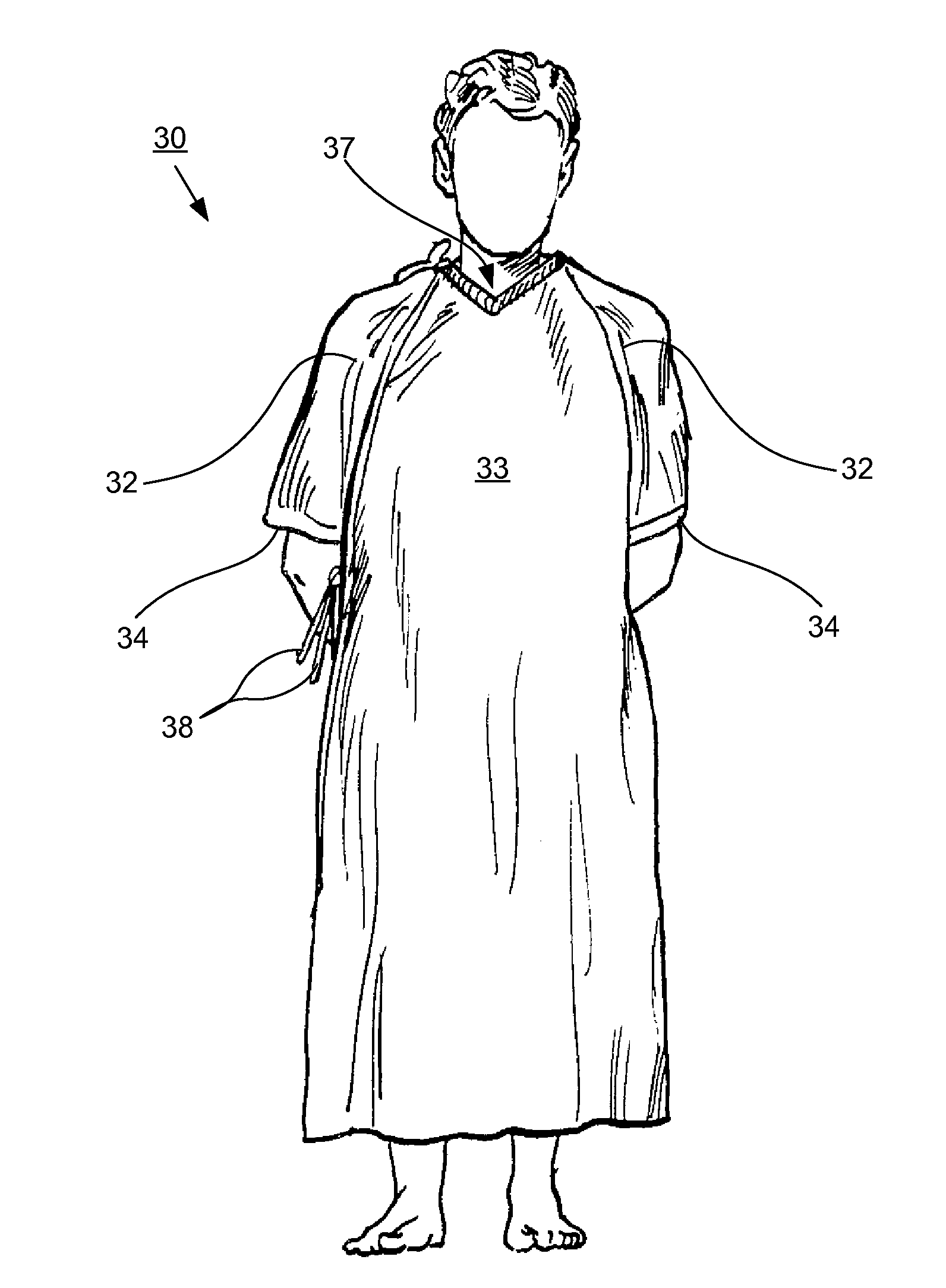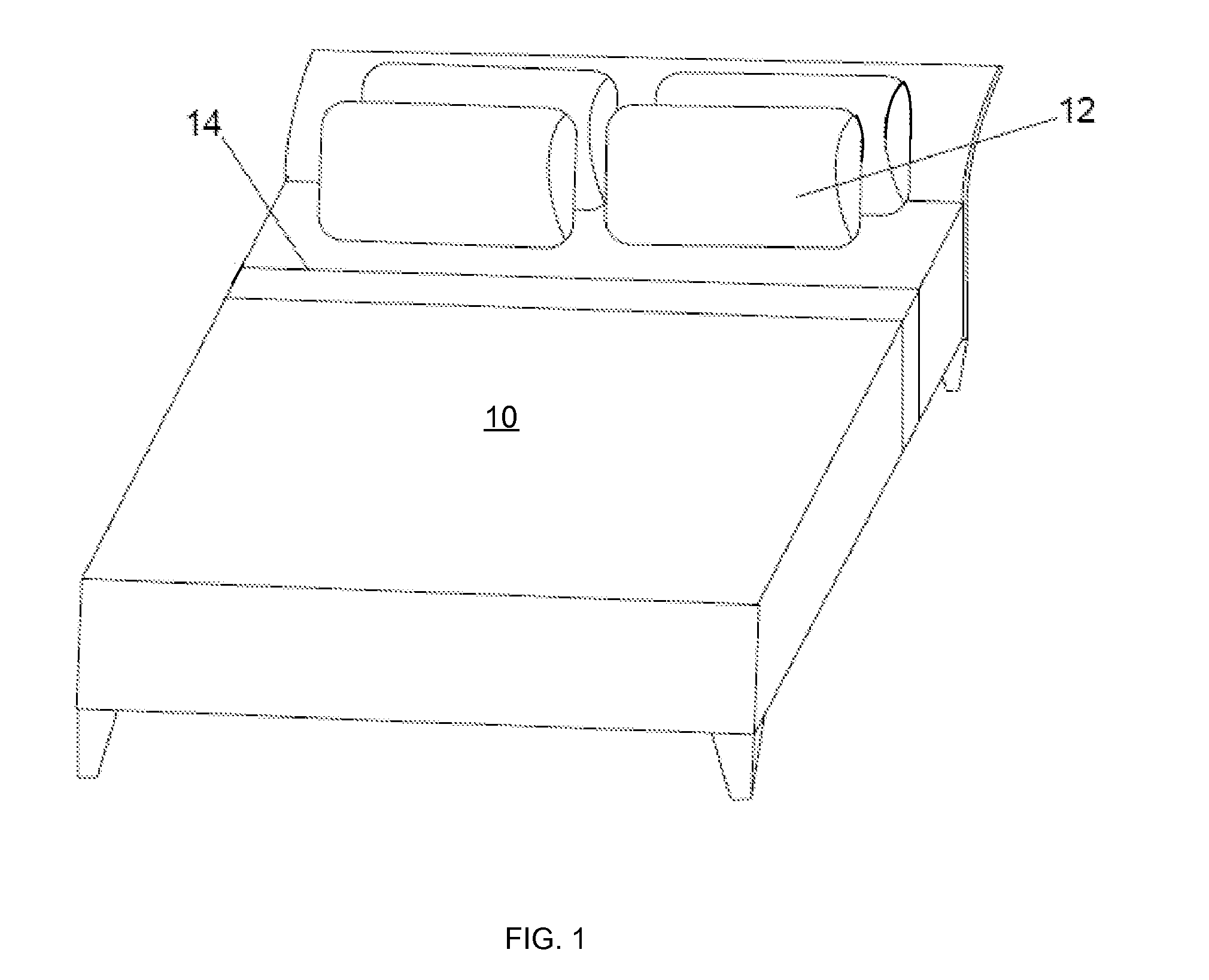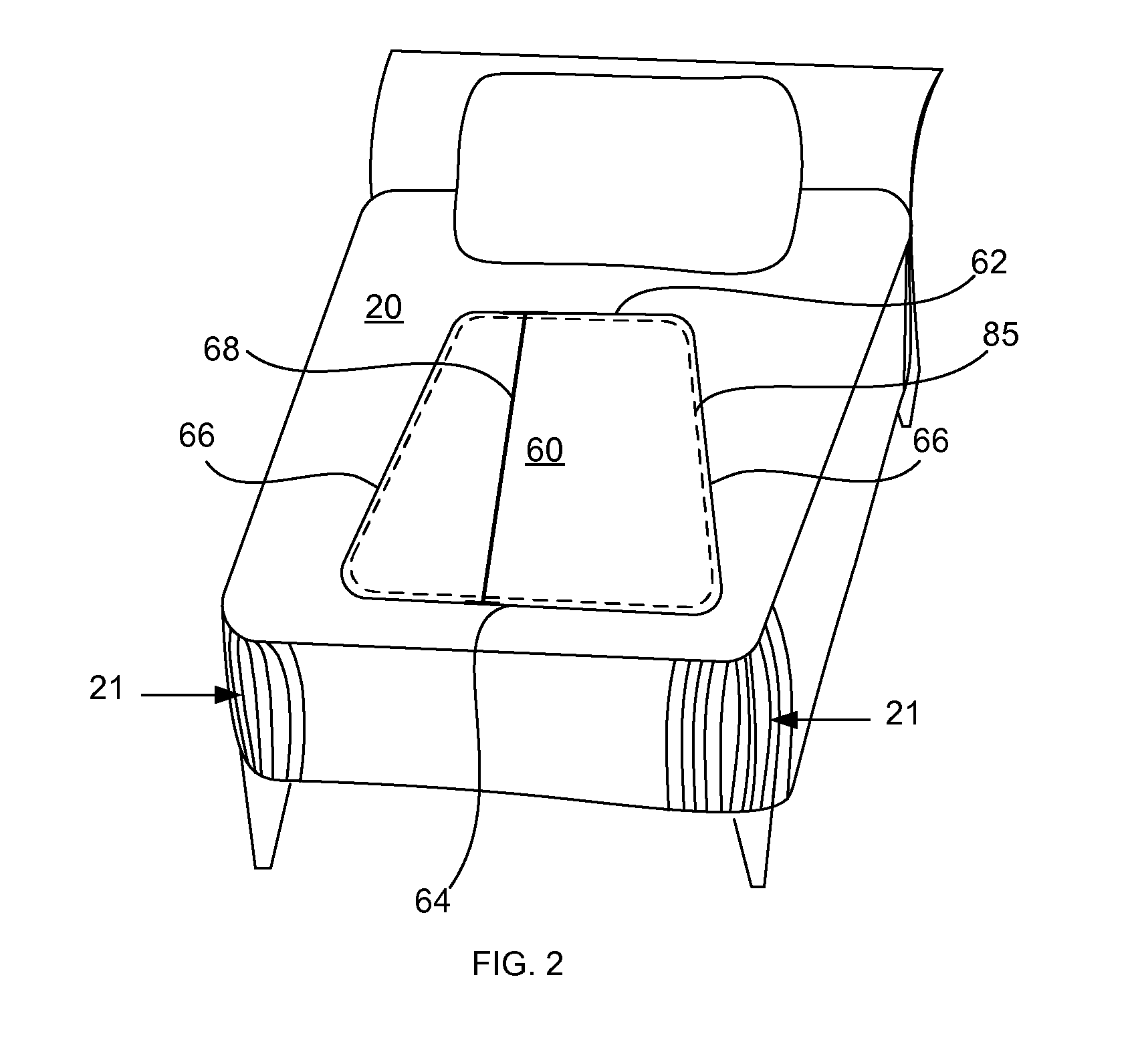Synthetic woven patient gown for preventing and reducing skin wounds
a technology of skin wounds and synthetic woven fabrics, applied in the field of therapeutic fabrics, can solve the problems of increasing healthcare costs, large proportion of annual healthcare costs, and significant skin problems of the world's population, and achieve the effect of reducing the risk of infection, and reducing the number of patients
- Summary
- Abstract
- Description
- Claims
- Application Information
AI Technical Summary
Benefits of technology
Problems solved by technology
Method used
Image
Examples
Embodiment Construction
[0053]A therapeutic fabric for the prevention and treatment of skin wounds and disorders is disclosed. As used herein “the fabric” or “the therapeutic fabric” shall refer to this fabric unless the context implies differently. The fabric is used to form articles that contact the skin, such as bedding and patient gowns. Used herein “bedding” shall refer to bottom bed sheets, top bed sheets, pillow cases and / or underpads, and “articles” shall refer to bedding and patient gowns. The therapeutic fabric includes warp yarns and filling yarns woven to provide a smooth fabric surface. In the preferred embodiment, one of the warp or filling yarns is at least 40% by weight of the fabric of continuous filament nylon, and the other of the warp or filling yarns is from about 0% to about 60% by weight of the fabric of continuous filament polyester or nylon having non-round filament cross sections. The most preferred embodiment includes about 1% to about 2% of a conductive yarn to control static el...
PUM
| Property | Measurement | Unit |
|---|---|---|
| Surface Roughness | aaaaa | aaaaa |
| surface roughness | aaaaa | aaaaa |
| geometric surface roughness | aaaaa | aaaaa |
Abstract
Description
Claims
Application Information
 Login to View More
Login to View More - R&D
- Intellectual Property
- Life Sciences
- Materials
- Tech Scout
- Unparalleled Data Quality
- Higher Quality Content
- 60% Fewer Hallucinations
Browse by: Latest US Patents, China's latest patents, Technical Efficacy Thesaurus, Application Domain, Technology Topic, Popular Technical Reports.
© 2025 PatSnap. All rights reserved.Legal|Privacy policy|Modern Slavery Act Transparency Statement|Sitemap|About US| Contact US: help@patsnap.com



